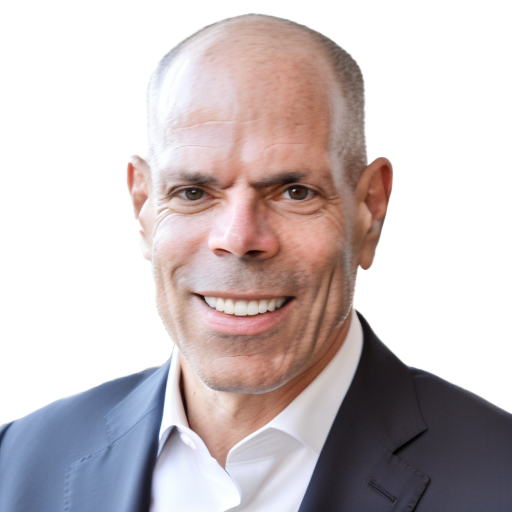
The cyber threat landscape has evolved rapidly since COVID-19 and a remote workforce adds to the challenges of corporate cybersecurity. Companies have many new and different security concerns, with some employees working remotely and some in-house. They have to worry about their own internal network, as well as the devices and apps their employees use to support remote work.
All of this has expanded the potential attack surface exponentially. Due to this new “normal,” companies must continuously invest in security awareness training and update their policies regularly to ensure that they reflect the current threat landscape. Most data breaches occur due to employee error. In fact, according to Verizon’s 2021 Data Breach Investigations Report, more than 85% of cyber incidents are caused by human error.
With social engineering, phishing emails, and ransomware on the constant rise, security awareness training is more critical now than ever. Your employees are your first line of defense and can either help keep the bad guys out or they can let a wolf in the door.
By cultivating a healthy cybersecurity culture, you can begin to proactively meet these challenges and empower your team to keep the network safe. Let’s explore cybersecurity culture and how to create one for your organization.
What Is a Cybersecurity Culture?
A cybersecurity culture is when every employee, from top to bottom, is informed about cybersecurity best practices and they are willing to help keep the company safe. Some characteristics of a cybersecurity culture include:
- Investment: An investment in ongoing security awareness training is prioritized, as well as regular communication to keep security on everyone’s mind.
- Motivation: Each employee sees themselves as part of the solution, essentially as a gatekeeper with an important responsibility.
- Buy-in across the company: Everyone understands why security is essential to the entire organization and is fully on board with the rules and processes to keep data secure, recognize phishing emails, and spot attacks before they become a problem.
An excellent example of cybersecurity culture in action is when an employee receives an “urgent” message from the CEO asking for the password to the human resources database (containing everyone’s social security numbers and other data). The employee is immediately suspicious of this unusual request, checks to see where the email came from, and sees that it is spoofing her boss’s email address. She immediately alerts IT to inform them about the phishing email. They, in turn, quickly alert the whole company, so no one opens the same email or clicks the malicious link.. As a result, the company is saved from this possible ransomware attack because they have a strong cybersecurity culture.
The Benefits of a Cybersecurity Culture
The benefits of building a cybersecurity culture are immense and priceless. Some of the benefits include:
- Reduces risk
- Saves time and money.
- Keeps the network safer
- Allows for rapid response to threats
- Improves the company’s reputation
- Strengthens employee pride and loyalty
By investing in a cybersecurity culture, you gain an entire workforce constantly monitoring for cyberattacks. With everyone on high alert, you have a much better chance of preventing attacks and quickly responding to them. Security awareness training adds volume to your IT department by making everyone a sentinel.
The bottom-line benefit is that employees feel more empowered to do their job while also helping to keep the company safe. A strong cybersecurity culture fortifies a business’s first line of defense —its people.
Who Is Responsible for Your Company’s Cybersecurity Culture?
At Cyberleaf we believe creating a cybersecurity culture within your business is best achieved through a top-down approach to protection.
Ideally, cybersecurity culture is a board-level initiative. When executives set the vision and prioritize the needs, the Chief Information Officer (CIO) or Chief Information Security Officer (CISO) can create the program and execute it, while Human Resources can lean into its strength of keeping employees engaged.
However, one of the biggest hurdles can be lack of employee or executive buy-in. Often top executives are excluded from security awareness training, which is a costly mistake. Their buy-in is just as necessary as the employees’ and IT departments’. When executives are dialed in, they inspire workers to follow suit and keep the network and digital assets safer.
Although ultimately, responsibility lies with the head of the company, that is not necessarily who should lead the security awareness initiative. It may make sense to assign that responsibility to the CIO or CISO, but a more logical choice is someone relatable with whom everyone in the company can work and get along with, such as an HR person. They can even create fun events to get everyone on board and keep them engaged.
Cybersecurity culture is more than just creating new policies; it’s keeping the conversation going so that cybersecurity stays at the forefront of every business operation. Choose the person that is best suited to carry out that mission.
How to Create a Cybersecurity Culture
The ultimate goal of cultivating a cybersecurity culture is to protect the company’s assets.
Some tips for developing a cybersecurity culture include:
- Security Awareness Training – Invest in high-quality security awareness training. Use a reputable firm to instruct staff on the latest hacker tactics and how to combat them. Make cybersecurity awareness training fun to keep everyone engaged.
- Employee and Executive Buy-In – Get employees and executives to buy in. Find creative ways to incentivize everyone to want to use cybersecurity best practices.
- Define Roles & Expectations – Clearly define roles and expectations. When everyone knows where they stand and what is expected, results are usually more positive.
- Rewards Program – Reward good cybersecurity actions. Start an incentive program and use tokens, such as gift cards, to promote healthy cybersecurity commitment.
- Talk the Talk – Encourage casual cybersecurity conversation in Zoom meetings or around the water cooler. Make the conversation part of everyday culture.
- Review Process – Hold everyone to the same standards and make cybersecurity awareness a part of each employee’s review process.
- Culture Owner – Assign a “culture owner” who takes the lead and keeps it active.
- Make Training Relatable – Use teaching moments throughout the work week to show how to appropriately respond to or examine a phishing email or social engineering attack. Use language that resonates with your workforce. Don’t make it too complex or intellectual; speak their language. Messaging is critical when communicating about cybersecurity. If no one understands the task, they won’t be able to carry it out.
- Practice Drills – Test your entire staff with routine practice drills or fake emergencies to ensure they respond appropriately.
- The Right Tools – Invest in the right security tools like Cybersecurity-as-a-Service (CSaaS) to make cybersecurity easier for everyone.
How CSaaS Can Help You Build a Strong Cybersecurity Culture
CSaaS helps you build a strong cybersecurity culture by alleviating risks and monitoring your systems 24/7. It’s also easy-to-use, making the service accessible to all experience levels within the company.
A CSaaS provides the following tools to help keep the company safe while building a strong cybersecurity culture:
- End-to-end cybersecurity protection
- Easy-to-use tools that anyone in the company can be trained to use
- A team of cybersecurity professionals at your disposal
- Active threat mitigation
- Managed IT services 24/7, 365 days a year with detection, alerts, and response
- Flexible options with complete, advanced protection
- Cybersecurity training for all staff and executives
- Full security audit report and proactive engagement plan
Cyberleaf’s CSaaS complements your cybersecurity culture and perfects your protection. Learn more about Cyberleaf’s CSaaS and what we have to offer.





